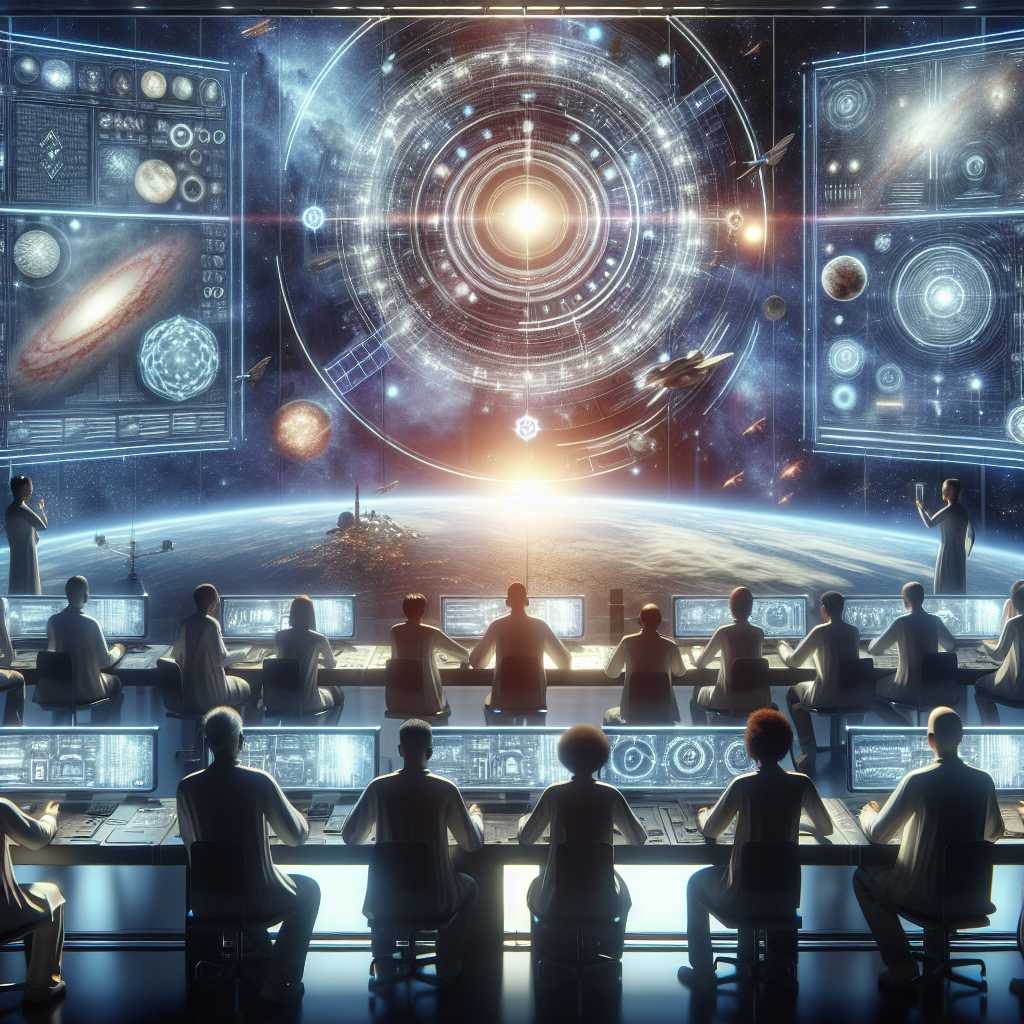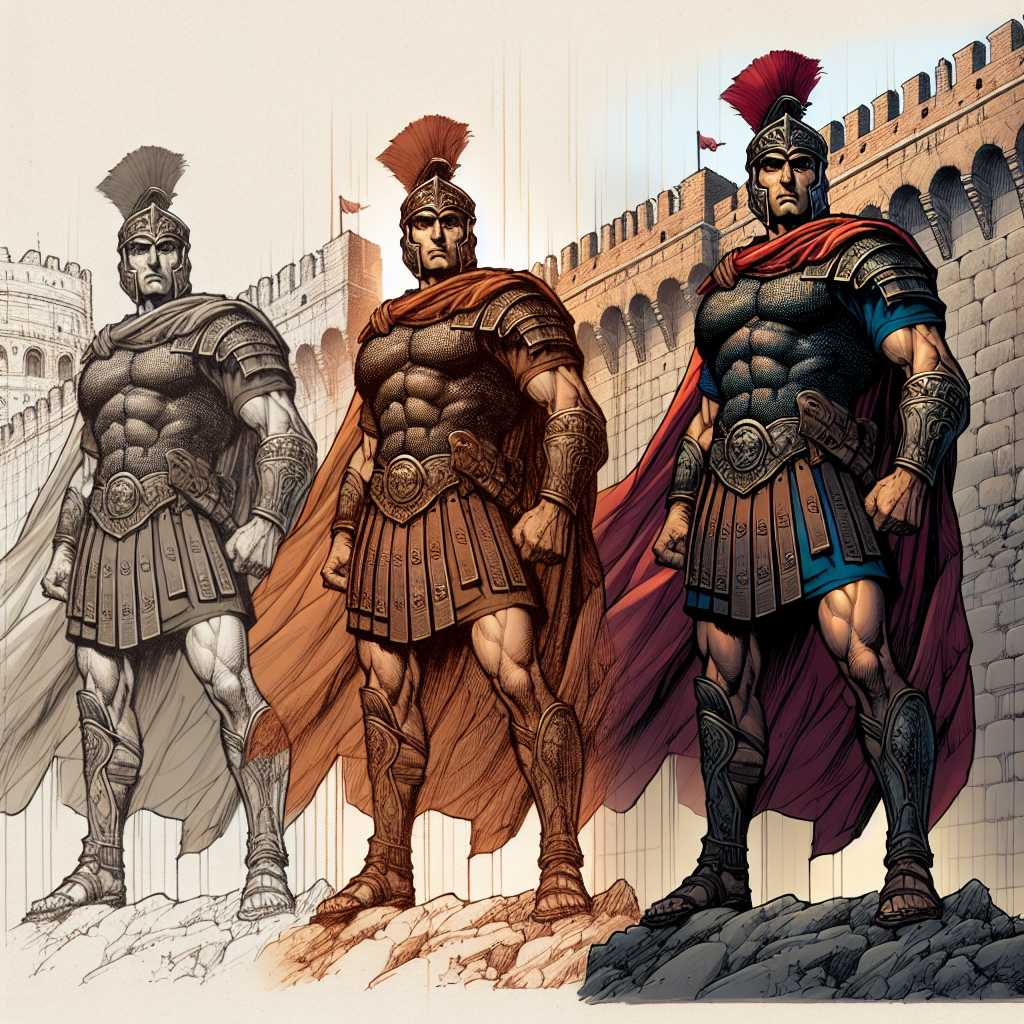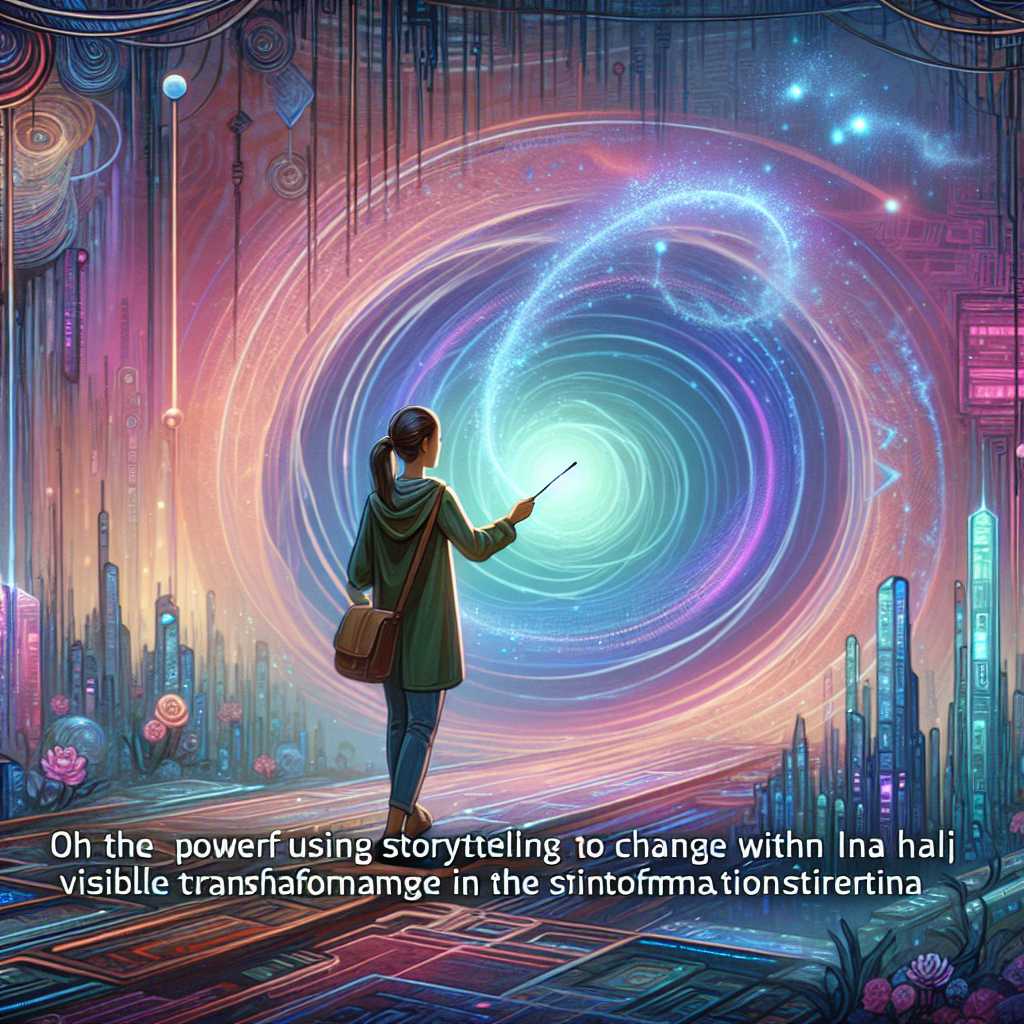
The stars twinkled brightly in the expansive night, a cosmic blanket beyond the prying eyes of those deeply rooted to the earth. For centuries, humanity had gazed upward, harboring dreams of interstellar travel, speculating about the possibility of extraterrestrial life, and wondering what mysteries the universe held. In a not-so-distant future, these dreams began to materialize as human civilization leaned into an era of unprecedented exploration and technological prowess.
In the year 2157, the interstellar ship Astraea was the pride and joy of the Unified Earth Coalition. Commanded by Captain Seraphina Voss, a woman celebrated for her unyielding determination and tactical brilliance, the Astraea was on a mission to explore Proxima Centauri b. This mission held the promise of answering an age-old question: Are we alone?
Captain Voss stood on the bridge of the ship, her eyes reflected the nebula scattered before them. "Ensign Rahim, status report," she commanded.
Rahim's fingers danced over the sleek, holographic interface. "We're on course and speed, Captain. Estimated time to Proxima Centauri b: thirty-two hours and counting."
The crew of the Astraea was an elite assembly of scientists, engineers, and military personnel. They understood the gravity of their mission and the boundless potential it held for humanity. Among them was Dr. Elara Thorne, a xenobiologist whose life's work was to study forms of life beyond Earth.
Dr. Thorne had been in her laboratory, scrutinizing samples from distant asteroids, when the hum of the ship's communication system beckoned her to the bridge. As she entered, her eyes met Captain Voss's. "You called for me, Captain?"
Voss nodded. "We've picked up an unusual signal. It's... rhythmic. Almost like a heartbeat."
Intrigued, Dr. Thorne approached the console where Lieutenant Jasper Muldoon was processing the signal. The enigmatic patterns danced across the screen, and she felt a thrill coursing through her veins. "Have we decoded any part of it?" she inquired.
Muldoon shook his head. "Not yet, Doctor. The signal doesn't match any known frequencies or languages. It's unlike anything we've encountered."
Hours turned into days as the crew tirelessly worked to decode the signal. The psychological impact of potentially discovering intelligent life slowly began to seep into their minds, both exhilarating and daunting. Dr. Thorne was on the verge of a breakthrough when the first signs of distress emerged.
Lieutenant Muldoon reported unusual readings from the ship's core. The primary drive was experiencing fluctuations, and systems were intermittently failing. The bridge lights flickered ominously, evoking a sense of foreboding among the crew.
"This signal," Dr. Thorne observed, "it's affecting the ship. We need to isolate its source and understand its purpose."
Captain Voss concurred. "Ensign Rahim, prepare the auxiliary team. We're going to triangulate this signal and attempt to isolate it away from our primary systems."
Minutes turned to hours as the crew, working with the precision of a well-oiled machine, modified sections of the ship to protect critical systems from the enigmatic interference. However, the signal seemed almost sentient, merging with the vessel as though it had a consciousness of its own.
"It's like the ship is alive," Ensign Rahim gasped, eyes wide with realization.
Captain Voss frowned, her grip on the armrest tightening. They had to do something, and fast. Determined not to fail, the crew redoubled their efforts. Dr. Thorne concocted a hypothesis that perhaps the signal was a form of communication from an ancient civilization, akin to a distress call or a beacon.
As the Astraea soared closer to Proxima Centauri b, the signal grew stronger, resonating through the ship's metal skeleton, its intensity almost palpable. The celestial body emerged as a shadowy silhouette against the stars, a planet holding its own secrets and truths.
Finally, they reached orbit, and the ship hovered above the enigmatic planet. Captain Voss, with Dr. Thorne by her side, led the team to the surface. Stepping onto the alien terrain, they were greeted by a landscape of ethereal beauty—crimson vegetation danced in a gentle wind, and bizarre rock formations towered like silent sentinels.
The source of the signal was more than just a mechanical transmission; it was a sprawling structure buried deep beneath the planet's crust. The team used imaging technology to trace the maze-like corridors of the subterranean complex. It was here that they found an ancient interface, glimmering with bioluminescence.
Excitement and trepidation warred within them as Dr. Thorne approached the interface. "This could be the key," she murmured, a mixture of awe and caution in her voice.
With a series of precise gestures, she began to interact with the interface. The alien script morphed into something comprehensible, revealing the truth behind the signal. It was a cry for help, sent by a once-flourishing civilization on the brink of extinction. Their final hope lay in the beings who uncovered their message.
"We were not the first, but maybe we can ensure we aren't the last," Captain Voss said, her voice filled with resolve.
The crew worked incessantly, using the knowledge embedded in the alien archives to stabilize their ship and return to Earth with the tales of their discovery. The journey back was a beacon of hope—a triumphant return that would alter the course of human history forever.
Upon their arrival, the message was broadcast to the world, uniting humanity with a newfound sense of purpose and a deeper connection with the universe. The mission of the Astraea proved that they were not alone, and their story became an epic saga that would be told for generations to come—a testament to the resilience of explorers and the boundless possibilities that lay among the stars.










